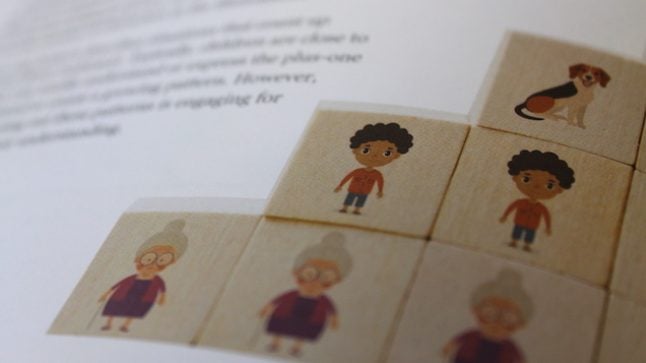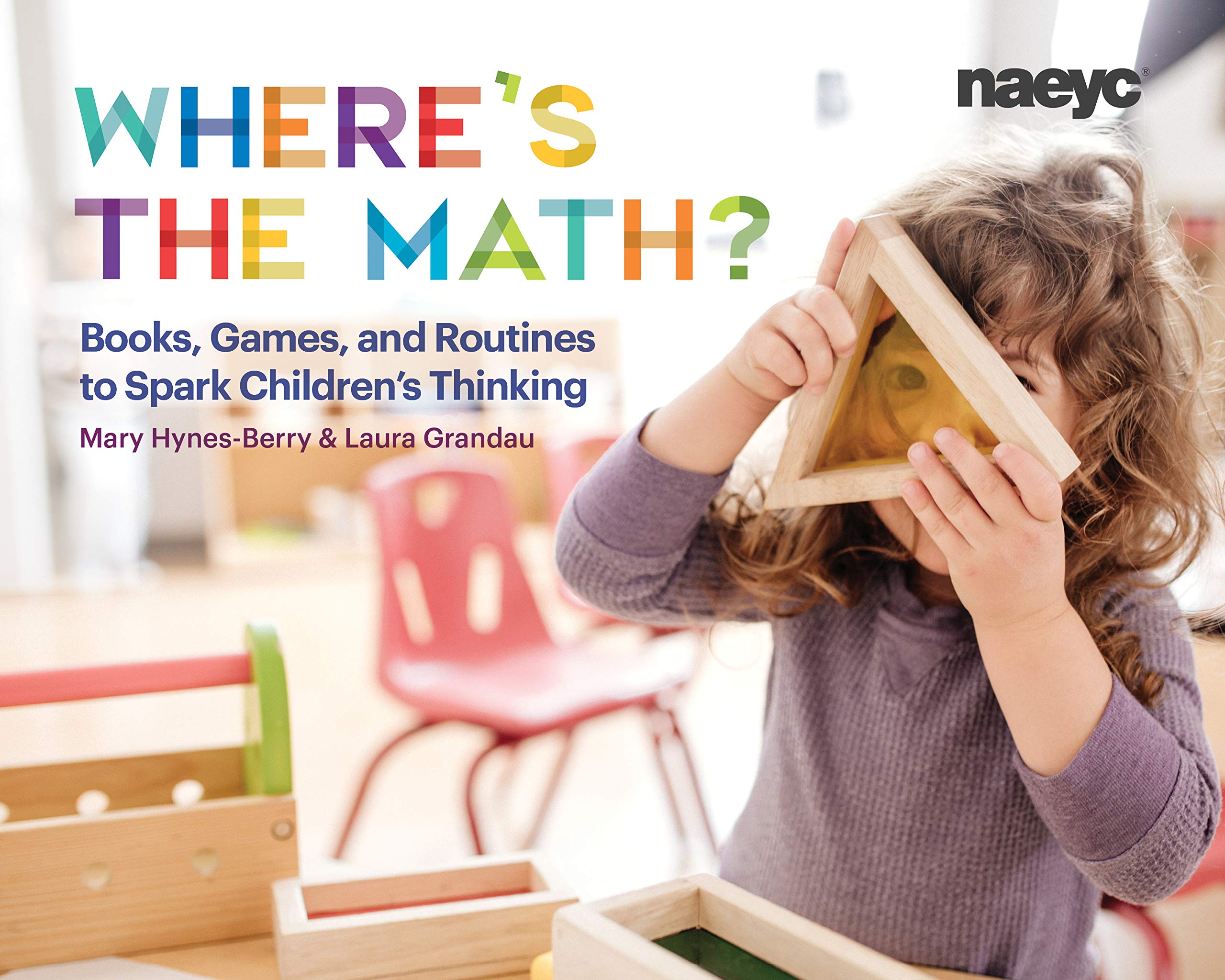Series: About the Collaborative
New Book Tells Where to Find Math Fun in Books, Games, and Routines

Books, games, and routines are a natural entry point for math fun in the early years. These ways of engaging children in math build on their interests, discoveries, and questions. A new book by Mary Hynes-Berry, PhD, and Laura Grandau, PhD, tells how to tap into children’s curiosity to explore the math that is found in everyday life and in play.
The book, called Where’s the Math?: Books, Games, and Routines to Spark Children’s Thinking, evolved from a professional development project in partnership with the Overdeck Family Foundation that took place in 2017-18. Called “Families Finding Math in Storybooks,” Hynes-Berry and Grandau conducted learning labs and consulted with librarians at the Evanston Public Library in order to develop better knowledge and practices for their librarians and the families that come through their doors.
We discuss with co-author Dr. Mary Hynes-Berry her experiences with developing such a book.

Framing math learning by using questions children ask as a jumping off spot is a unique concept. Why did you decide to start there for this book?
Children’s interest and understanding of the math all around us is grounded in questions. In fact, even as adults, we are always trying to come up with answers to questions like “How big is it?” or “How many do we have? need? want?” The hope is that using these questions will shift the attitudes and beliefs of teachers who are used to worksheets instead of math investigations.
You use children’s books often as a recommended tool for expanding children’s math thinking. Is there a recent book you’ve discovered that you find rich in math opportunities?
I’m finding new books every time I turn around! In fact, it’s pretty hard to think of a really good children’s book that doesn’t have some math in it. But one I recently discovered is Alma and How She Got Her Name. It is a beautiful celebration of names and lends itself well to all the math activities we can do around them, such as name towers.
Is there a classic book that most teachers and parents probably have on their bookshelves that they maybe don’t know is very mathematical?
I would guess that most people who are very familiar with Goldilocks and the Three Bears would never think of it as very mathematical. But we have been using in the Collaborative virtually from the beginning.
What advice do you have for teachers and parents when it comes to tailoring activity ideas to their situation and their children?
Effective tailoring of an activity comes down to two things:
- Have a clear understanding of the mathematical Big Idea and a specific understanding you want to build.
- Have an equally clear sense of the interests, needs, and disposition of the specific children for whom you are tailoring the lesson.
What is an everyday activity or routine that teachers or parents may be surprised to know can be very mathematical?
Everybody knows that songs with movement are wonderful ways to transition or to begin group time. But many teachers and parents are surprised that a song that has no numbers in it such as The Wheels on the Bus or The Hokey Pokey are full of math, especially math related to spatial reasoning and patterns.
Is there something new you learned or was reinforced through the process of writing this book?
I ended up with a digging-deeper understanding of how books, games, and routines have so much mathematical thinking and problem-solving embedded in them. And that playing intentionally with that math is an incredibly powerful, engaging way to make sense of how math truly is all around us. I love to see the enthusiasm of teachers and children both when that message comes across.

Where’s the Math?: Books, Games, and Routines to Spark Children’s Thinking
Make math learning both meaningful and fun by building on children’s natural curiosity to help them grow into confident problem solvers and investigators of math concepts. Using five math-related questions children wonder about as a framework, this book helps you go deeper into everyday math with children.